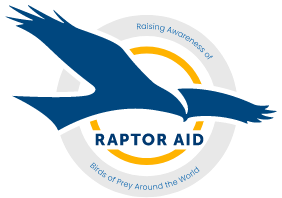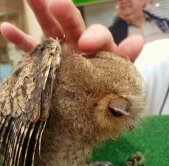Poke & Stroke - It's not cool!
There isn’t a week that passes when we aren’t sent images or come across images of organisations using birds of prey in the public domain with poor basic welfare standards. We have blogged about this previously referring to many outfits as ‘poke and stroke’ in relation to the way they allow people to handle and stroke their birds to make money. Raptor Aid has contacted countless local authorities, event organisers and venue owners trying to highlight the poor practices and welfare standards they are allowing to take place. Sadly for the most part our efforts come to a dead end. It might come as no surprise that when we go direct to the owners of the birds our advice and concerns are often met with aggression and animosity – no one likes to be told they are in the wrong and have their livelihood threatened – Raptor Aid believes anyone who works with animals in any form should follow best practice and welfare guidelines along with reviewing how they manage and work with their birds.So where does this ‘poke and stroke’ mentality come from? Is it as bad as we make it out to be? And if so what is Raptor Aids answer to the problem? In this blog, we aim to answer these questions and more (Get comfy it’s a long blog!!).Birds of prey in captivity and commercial useTo those with little knowledge of birds of prey (BOP) in captivity this has been going on for centuries, more correctly known as falconry, the art of hunting with a bird of prey. These techniques are now used for training any bird of prey in captivity. When I first had an interest in captive birds of prey around 18 years ago there was, to my knowledge, only two bird of prey centres in the North West. Individual falconers were very secretive and kept to themselves. You needed a contact or be fortunate to know someone well enough to gain access to this world. I also remember the price of birds being higher than present day with Harris Hawks fetching between £800-1400 and Goshawks over £2000. During those 18 years, I have seen a remarkable change in not only the use of BOP but the price the birds fetch.The problem begins with who can own a bird of prey – anyone can! You could go out tomorrow and buy yourself a Barn owl or Harris hawk and sadly there are no laws or legislation to stop you or to check your knowledge of how to care for the bird. The only paperwork that is required is proof that the bird is captive bred (known as an article 10) this is provided by the breeder on collection of the bird and is in place to control the trade in wild BOP. However not all birds of prey need an article 10 or any form of identification (Leg ring/microchip). This has seen a huge increase in BOP being bred for commercial profit and has led to the increased use of birds to make money commercially with little legislation. Due to the relative ease of captive breeding the value of many species has fallen, Barn owls can be bought for as little as £50, Harris hawks as low as £150 and Goshawks less than £500.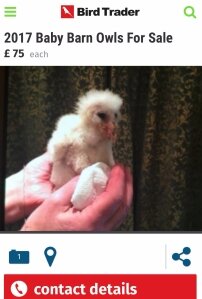
 In the North West 18 years on, you can easily find 10 bird of prey centres ranging in size and quality and a similar number of freelance organisations that have no base, these are the ones that have the fewest restrictions and often cause the most concern. Bird of prey centres that are open to the public for more than 7 days in a calendar year must have a Zoo Licence, this a legal requirement with an inspection carried out by a government inspector. However, a Zoo Licence isn’t a necessary requirement for public BOP displays. If you see a public display with BOP that you are concerned about it is worth asking if they have visitor centre, as the council is obligated to investigate complaints for licenses they grant.
In the North West 18 years on, you can easily find 10 bird of prey centres ranging in size and quality and a similar number of freelance organisations that have no base, these are the ones that have the fewest restrictions and often cause the most concern. Bird of prey centres that are open to the public for more than 7 days in a calendar year must have a Zoo Licence, this a legal requirement with an inspection carried out by a government inspector. However, a Zoo Licence isn’t a necessary requirement for public BOP displays. If you see a public display with BOP that you are concerned about it is worth asking if they have visitor centre, as the council is obligated to investigate complaints for licenses they grant.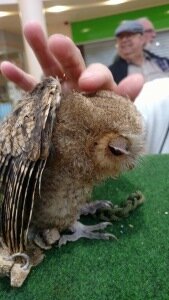 The easy availability of birds has seen a rise in organisations using birds of prey for public displays and talks. These can appear in many guises from commercial services like handling sessions and flying displays, or sanctuaries and rescues who are claiming to work for the birds in their care, including wild birds of prey. Anyone using animals commercially should be scrutinised for what educational and conservation message they are giving out. In Raptor Aid’s opinion animals should not be used SOLELY just to make money and as humans we should have moved past this idea of looking at animals in captivity purely for our enjoyment and pleasure. Don’t be afraid to question any organisation on their conservation and education credentials. BOP rescue is often a common reason for asking the public for money in the form of donations using captive BOP and again you should not be afraid to ask about their credentials. If they are asking for donations are they a registered charity? If not then we would advise against handing over your money unless they can show complete transparency. If they claim to work with wild birds of prey they should not have any wild birds on display, this is against the law. If they are raising money for captive bred birds of prey they have rescued again you should ask yourself, where is my donation going? If they are not a charity then they don’t have anyone to answer to so can spend your donation on whatever they like. Often these types of organisations allow handling of the birds for a small fee with the chance to stroke them & take photographs. You must ask yourself who is this really for and is it going to directly benefit the birds? There are several issues with this which we will address in more detail below.Location - Why are they there?The chances are the organisation are in attendance as an added attraction to an event or venue. Professional well-presented organisations are now being squeezed out by bad organisations because the latter don’t charge a fee to attend but will make money from the public by charging for activities like holding a bird. The former organisations may charge £250 or more to be in attendance but this is for a reason - it costs money to run a professional BOP display team. Sadly, event organisers don’t take this into account and now shun the professional set ups for the free option. Often organisations may claim to be a not-for-profit organisation, charitable or Community Interest Company - these are used to put your mind at ease but unless they have a registered charity number then you can never be sure where your money is going. The venues that birds of prey are now being used in are of concern for Raptor Aid, in our opinion town centres, outside supermarkets and even in cinemas are stressful environments for birds of prey. These are chosen because of the large volume of visitors for making money.DonationsBritain is supposed to be a nation of animal lovers and Raptor Aid sees this being abused by some organisations showing BOP in public. Some organisations just ask straight up for a donation for the upkeep of their birds – captive bred birds of prey that are not wild rescues that the public are duped into thinking they are helping in some way when they may just be funding someone’s hobby. Giving a small donation or paying for a picture with a bird is often done with cash, which can be a tricky thing to keep track of. Raptor Aid questions how much of this money is taxed if the organisation is not registered as a company or charity. We have also seen many organisation using the birds to fundraise for other charitable causes and whilst this might seem like a noble thing to do it does not mean the welfare of the birds should be any less important.Poor equipment and husbandryAs stated running a professional bird of prey team is expensive which is why you should expect to pay £250 upwards for a professional display. Many of the bad organisations cut corners on things like insurance, equipment, diet, and out-of-site housing. Birds in poor feather condition, sat on inappropriate and dangerous perches wearing badly fitting equipment are just some of the things we often see that might not be obvious to the public. Also of concern is the way the birds are handled, birds of prey do not suit being cuddled and laid on their backs. They possess sharp talons so using bare hands or perching on people’s heads and shoulders is not only dangerous but bad practice.The birds’ needsSome of the basic needs for a bird of prey when on display include being provided with a suitable comfortable perch, fresh water for bathing or drinking, shelter from the elements (gazebo etc), barrier or fence from the public and to be free from stress from the other birds and any surrounding activity. It is difficult not to get too anthropomorphic about animals but instead we should try to be sympathetic to their natural requirements. Birds of prey are predators who in the wild would try to avoid humans at all costs, a captive BOP although trained to accept humans as part of their life, and build up trust, still need to be shown respect. They are not animals that we believe enjoy or benefit from being handled or stroked by lots of people continuously and owls are often the ones that must deal with this the most. Despite what you are told just because a captive bred owl is hand reared does not mean it enjoys being touched by multiple people, owls especially are one of the more secretive group of birds. We have heard all sorts of excuses about how stroking birds on the back of the head or with the back of your hand doesn’t harm the feathers - this is rubbish! Continual stroking of any bird’s feathers will damage their delicate structure and is purely for human enjoyment.
The easy availability of birds has seen a rise in organisations using birds of prey for public displays and talks. These can appear in many guises from commercial services like handling sessions and flying displays, or sanctuaries and rescues who are claiming to work for the birds in their care, including wild birds of prey. Anyone using animals commercially should be scrutinised for what educational and conservation message they are giving out. In Raptor Aid’s opinion animals should not be used SOLELY just to make money and as humans we should have moved past this idea of looking at animals in captivity purely for our enjoyment and pleasure. Don’t be afraid to question any organisation on their conservation and education credentials. BOP rescue is often a common reason for asking the public for money in the form of donations using captive BOP and again you should not be afraid to ask about their credentials. If they are asking for donations are they a registered charity? If not then we would advise against handing over your money unless they can show complete transparency. If they claim to work with wild birds of prey they should not have any wild birds on display, this is against the law. If they are raising money for captive bred birds of prey they have rescued again you should ask yourself, where is my donation going? If they are not a charity then they don’t have anyone to answer to so can spend your donation on whatever they like. Often these types of organisations allow handling of the birds for a small fee with the chance to stroke them & take photographs. You must ask yourself who is this really for and is it going to directly benefit the birds? There are several issues with this which we will address in more detail below.Location - Why are they there?The chances are the organisation are in attendance as an added attraction to an event or venue. Professional well-presented organisations are now being squeezed out by bad organisations because the latter don’t charge a fee to attend but will make money from the public by charging for activities like holding a bird. The former organisations may charge £250 or more to be in attendance but this is for a reason - it costs money to run a professional BOP display team. Sadly, event organisers don’t take this into account and now shun the professional set ups for the free option. Often organisations may claim to be a not-for-profit organisation, charitable or Community Interest Company - these are used to put your mind at ease but unless they have a registered charity number then you can never be sure where your money is going. The venues that birds of prey are now being used in are of concern for Raptor Aid, in our opinion town centres, outside supermarkets and even in cinemas are stressful environments for birds of prey. These are chosen because of the large volume of visitors for making money.DonationsBritain is supposed to be a nation of animal lovers and Raptor Aid sees this being abused by some organisations showing BOP in public. Some organisations just ask straight up for a donation for the upkeep of their birds – captive bred birds of prey that are not wild rescues that the public are duped into thinking they are helping in some way when they may just be funding someone’s hobby. Giving a small donation or paying for a picture with a bird is often done with cash, which can be a tricky thing to keep track of. Raptor Aid questions how much of this money is taxed if the organisation is not registered as a company or charity. We have also seen many organisation using the birds to fundraise for other charitable causes and whilst this might seem like a noble thing to do it does not mean the welfare of the birds should be any less important.Poor equipment and husbandryAs stated running a professional bird of prey team is expensive which is why you should expect to pay £250 upwards for a professional display. Many of the bad organisations cut corners on things like insurance, equipment, diet, and out-of-site housing. Birds in poor feather condition, sat on inappropriate and dangerous perches wearing badly fitting equipment are just some of the things we often see that might not be obvious to the public. Also of concern is the way the birds are handled, birds of prey do not suit being cuddled and laid on their backs. They possess sharp talons so using bare hands or perching on people’s heads and shoulders is not only dangerous but bad practice.The birds’ needsSome of the basic needs for a bird of prey when on display include being provided with a suitable comfortable perch, fresh water for bathing or drinking, shelter from the elements (gazebo etc), barrier or fence from the public and to be free from stress from the other birds and any surrounding activity. It is difficult not to get too anthropomorphic about animals but instead we should try to be sympathetic to their natural requirements. Birds of prey are predators who in the wild would try to avoid humans at all costs, a captive BOP although trained to accept humans as part of their life, and build up trust, still need to be shown respect. They are not animals that we believe enjoy or benefit from being handled or stroked by lots of people continuously and owls are often the ones that must deal with this the most. Despite what you are told just because a captive bred owl is hand reared does not mean it enjoys being touched by multiple people, owls especially are one of the more secretive group of birds. We have heard all sorts of excuses about how stroking birds on the back of the head or with the back of your hand doesn’t harm the feathers - this is rubbish! Continual stroking of any bird’s feathers will damage their delicate structure and is purely for human enjoyment.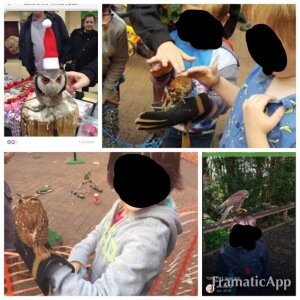 What’s good practice When it comes to bird of prey displays you certainly get what you pay for. A well set up public display of BOP should include well trained, settled birds sat on suitable perches well-spaced apart from each other with access to drinking and bathing water, underneath an appropriate shelter on a suitable surface (grass) in an appropriate area (field or park). The company should also be able to show if requested copies of relevant insurance, performing animals licence and animal transport licence at any event. Species specific signs are also a good thing to have in place for the public to read and trained members of staff on hand to answer questions. Public handling and participation in anyway should be avoided at any public event for the safety of the birds and the public as explained above. Any flying displays should be well choreographed with an entertaining and educational dialogue. Most of the above might seem like common sense and you would expect any organisation to have all of this at the forefront of their mind, but sadly as many images and personal experience have shown, this is not the case and it is getting worse.
What’s good practice When it comes to bird of prey displays you certainly get what you pay for. A well set up public display of BOP should include well trained, settled birds sat on suitable perches well-spaced apart from each other with access to drinking and bathing water, underneath an appropriate shelter on a suitable surface (grass) in an appropriate area (field or park). The company should also be able to show if requested copies of relevant insurance, performing animals licence and animal transport licence at any event. Species specific signs are also a good thing to have in place for the public to read and trained members of staff on hand to answer questions. Public handling and participation in anyway should be avoided at any public event for the safety of the birds and the public as explained above. Any flying displays should be well choreographed with an entertaining and educational dialogue. Most of the above might seem like common sense and you would expect any organisation to have all of this at the forefront of their mind, but sadly as many images and personal experience have shown, this is not the case and it is getting worse.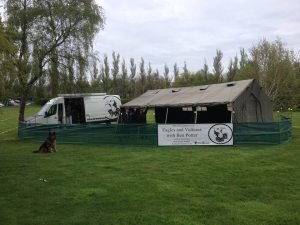 What’s the answer?The answer for Raptor Aid is simple in theory but not so in action, current legislation needs to be reviewed including the performing animals licence and zoo licence act. Travelling bird of prey teams should either be included in the zoo licence act or have specific legislation brought in to cover their requirements. Another move would be to bring in a licensing scheme for breeders of birds of prey and subsequently prospective buyers thinking of owning birds of prey. This we appreciate would be no easy task with many hurdles but the current status of buying and selling birds of prey needs addressing. Sadly, these suggestions cannot be easily actioned without more pressure on the government. What we can do is to continue gathering evidence and lobby event organisers and venues on what they should expect and what is good practice. We have tried to talk to the BOP organisations directly and unsurprisingly they don’t want to know. Sadly, many organisers and venues including local authorities are very closed to the ideas we present them. It appears that to some, the customer or event are more important than the welfare of animals, and it would cause too much inconvenience to pull an attraction based on information they don’t understand or want to understand. We have developed guidelines for both event organisers and venues and will be sending these out and offering training for local authorities and any other organisation who are receptive.How can you help?In some small way, you have helped by reading this. The next step would be to keep your eyes open and share what you have read here with friends and family. Every week Raptor Aid is approached by professionals who, despite carrying out their work in a professional manner, are suffering at the hands of others with poor standards. At the end of the day this is about the birds and how they are cared for and used commercially. If you wish to receive a copy of our guidelines please just drop us a message and feel free to share it widely. Don’t be afraid to ask questions and should you still not be happy then feel free to forward what you have seen to us and we will follow it up by contacting the organisers or venue. Information worth noting includes:
What’s the answer?The answer for Raptor Aid is simple in theory but not so in action, current legislation needs to be reviewed including the performing animals licence and zoo licence act. Travelling bird of prey teams should either be included in the zoo licence act or have specific legislation brought in to cover their requirements. Another move would be to bring in a licensing scheme for breeders of birds of prey and subsequently prospective buyers thinking of owning birds of prey. This we appreciate would be no easy task with many hurdles but the current status of buying and selling birds of prey needs addressing. Sadly, these suggestions cannot be easily actioned without more pressure on the government. What we can do is to continue gathering evidence and lobby event organisers and venues on what they should expect and what is good practice. We have tried to talk to the BOP organisations directly and unsurprisingly they don’t want to know. Sadly, many organisers and venues including local authorities are very closed to the ideas we present them. It appears that to some, the customer or event are more important than the welfare of animals, and it would cause too much inconvenience to pull an attraction based on information they don’t understand or want to understand. We have developed guidelines for both event organisers and venues and will be sending these out and offering training for local authorities and any other organisation who are receptive.How can you help?In some small way, you have helped by reading this. The next step would be to keep your eyes open and share what you have read here with friends and family. Every week Raptor Aid is approached by professionals who, despite carrying out their work in a professional manner, are suffering at the hands of others with poor standards. At the end of the day this is about the birds and how they are cared for and used commercially. If you wish to receive a copy of our guidelines please just drop us a message and feel free to share it widely. Don’t be afraid to ask questions and should you still not be happy then feel free to forward what you have seen to us and we will follow it up by contacting the organisers or venue. Information worth noting includes:
- Name of the company in attendance with the birds
- Date of event and name of event
- Location
- Images of the birds and display
- If you asked any questions their responses
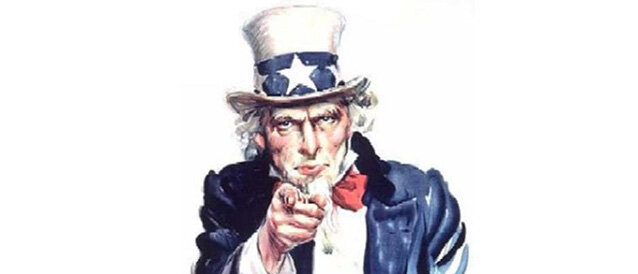 This isn’t going to go away overnight but it is something that needs to be addressed and changed as soon as possible. Every year hundreds of birds of prey are taken around village fetes, summer shows, town centres and shopping centres, children’s birthday parties and schools with little regard for the basic requirements and welfare needs for the birds – often the birds are the last thing to be thought about.
This isn’t going to go away overnight but it is something that needs to be addressed and changed as soon as possible. Every year hundreds of birds of prey are taken around village fetes, summer shows, town centres and shopping centres, children’s birthday parties and schools with little regard for the basic requirements and welfare needs for the birds – often the birds are the last thing to be thought about.
